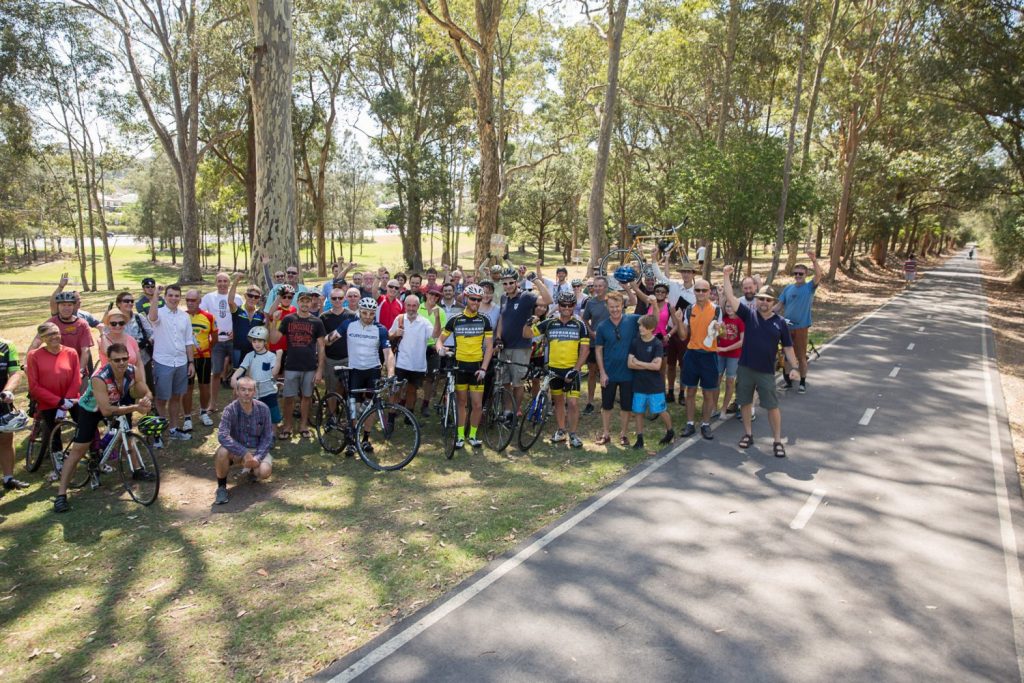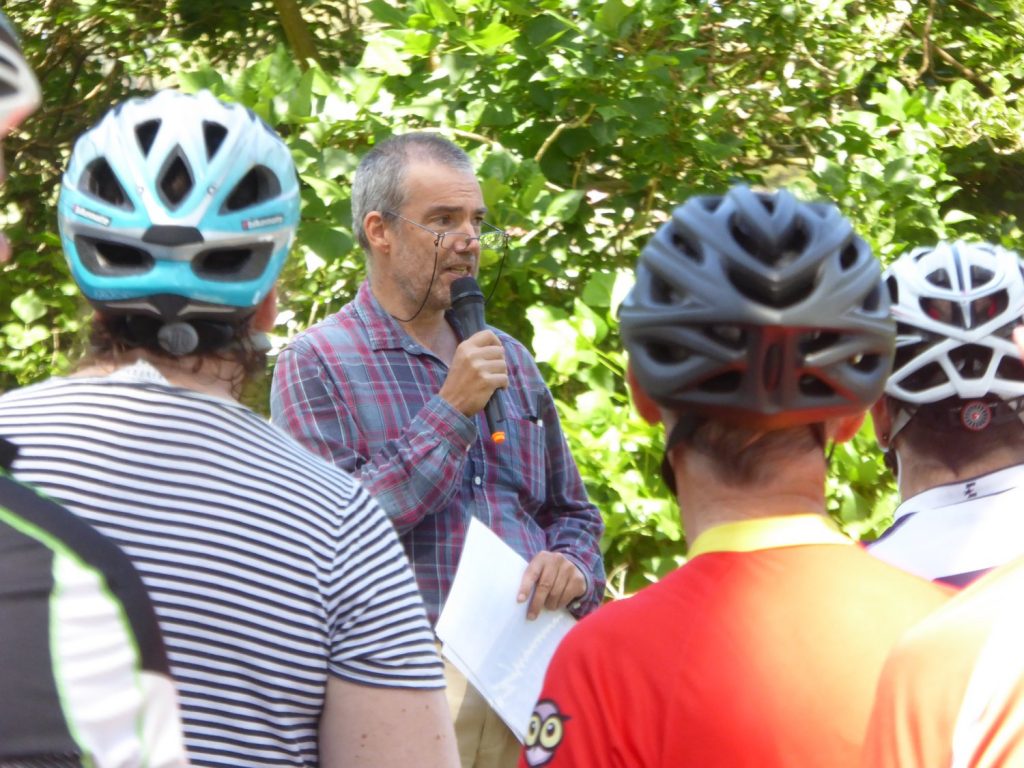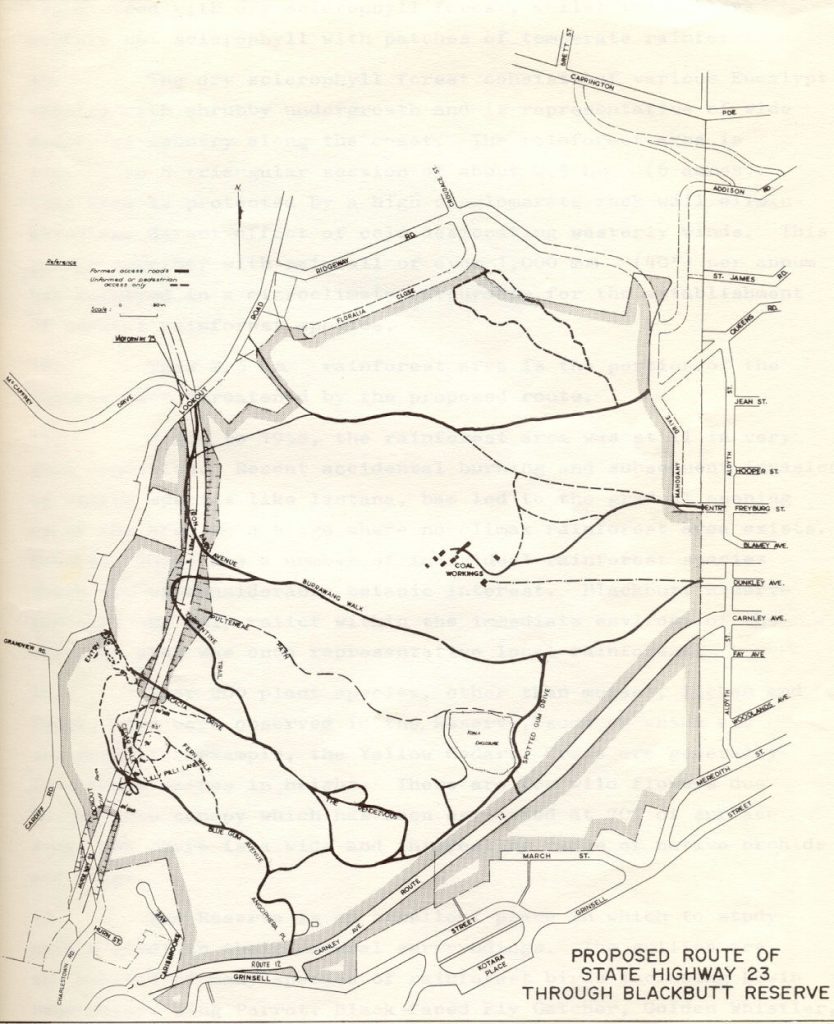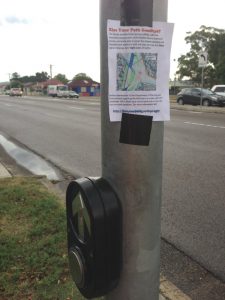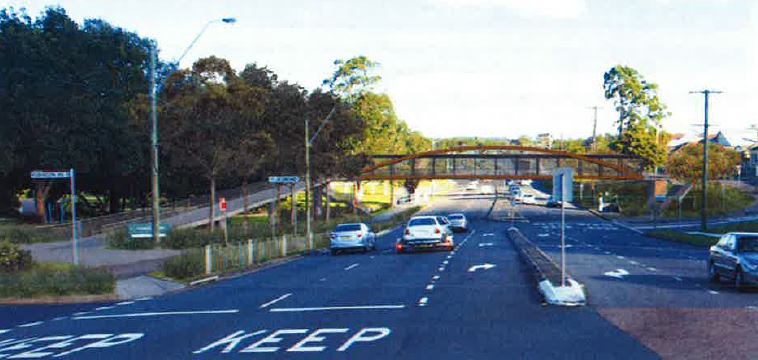
After several weeks of focusing on getting as many people as possible to submit a response to the EIS, I submitted my own response this morning. You can read it below or download it as a PDF document..
In regard to the construction of the Rankin Park to Jesmond link of the Inner City Bypass, I strongly object to the plans as presented in the November EIS to sever the off-road shared path that runs between Jesmond Park and Jesmond, and to replace it with three signalized crossings over multiple lanes of traffic of the bypass on and off-ramps.
I object to this on a number of grounds:
- It is unsafe for pedestrians and cyclists.
Having to traverse three sets of signalized crossings will result in pedestrians becoming impatient, and crossing against the lights, with a heightened risk of being hit by traffic coming from multiple directions. Also the design will encourage cyclists off the path onto Newcastle Road, again with heightened risk of serious accident and injury due to the highly complex nature of this interchange.
- It is detrimental to motorists.
The current plan to replace the off-road path with signalized crossings is detrimental to the interests of motorists in two ways. Firstly traffic heading west on Newcastle Rd wanting to turn south onto the bypass will have to face delays as pedestrians cross at the lights. Secondly with no continuous off road shared path cyclists travelling east or west will choose to travel on Newcastle Rd instead, thus impeding motorists.
- It is bad for the community.
I spent a number of hours at the site where the path is to be closed, talking to pedestrians and cyclists as they passed by. There are a huge range of people who use that path regularly – a dad walking with his young children to the park, local residents walking their dogs, elderly residents of the nearby Jenny MacLeod Retirement Village walking to the park, workers cycling to their place of employment, avid cyclists riding the Two City Circuit, teenagers from Lambton riding to the Brickworks Park in Wallsend. The severance of the shared path represents a significant degradation in community amenity.
- It is bad for health.
I took up cycling to work eight years ago, and that decision is the principal reason I am now 20kg lighter and a much healthier person. The health benefits of cycling and walking is no mere statistic, but a living reality. Removing the Jesmond shared path provides a disincentive to people walking and cycling, and will have net negative effect on the health of the community.
- It is in opposition to what the overwhelming majority of the community wants.
As creator of the KissYourPathGoodbye.com website I had numerous conversations with people on this issue. With just one exception[1] every person I spoke to, when I showed them the plan to replace the path with three crossings, were opposed to that plan, accompanied with varying degrees of outrage, dissatisfaction and dismay. The current design of three crossings might be an easy solution for the RMS – but no one wants it!
- It is financially imprudent.
The failure to retain the east-west off road connection when the bypass is constructed means that it will cost much, much more to retrofit the connection at a later date.
- It is a denial of natural justice
The Jesmond shared path runs along the line of the former Newcastle to Wallsend tram line. Tram operations ceased in November 1949 and the rails were removed in December 1949. For 68 years the people of this area have been using this path to traverse between suburbs, and now the State Government wants to take this away without any just recompense. While the plans do contain a much needed shared path overhead bridge on Newcastle Rd that will benefit people travelling north-south, this is no excuse for significantly degrading the path for pedestrians and cyclists travelling east-west. It is perverse that a government that is meant to serve the people should act in a way that marginalises those who desire to move themselves about by the power of their own two feet.
In making this submission to the November 2016 EIS, I would also like to highlight the gross failure of the Roads and Maritime Services to engage in genuine community consultation in the earlier phases of this project. In the past two years, as the concept design, strategic design, and refined strategic design have been exhibited, the RMS have been told numerous times, in no uncertain terms, by a multitude of cycling and community organisations, councils, local parliamentarians, and individual citizens, that the plan to replace the shared path with three signalized crossings was unacceptable.
Opposition to the plan was repeated and overwhelming – and yet the RMS changed nothing! What sort of consultation is that? I must draw special attention to section 4.5.4 of the EIS where the RMS supposedly addressed concerns about the removal of the shared path by ‘investigating’ and ‘costing’, and then dismissing two alternatives. The first alternative was a ridiculous and fanciful $30 million overhead bridge. The second alternative was a $3 million underpass that was dismissed as a possibility because it would be subject to flooding. This second option was just plain dopey, as the underpass proposed was routed along the lowest part of the landscape and adjacent to a major storm water drain – a design blunder astonishing in its naivety.
At best these investigations in section 4.5.4 reveal an embarrassing incompetence, at worst they demonstrate a devious intent to dismiss the concerns of the public in an act of token consultation. The RMS needs to strive towards a higher degree of professionalism, imagination, and public interest in their investigations.
In conclusion, I reiterate my opposition to the severance of the Jesmond Park shared path and call on the RMS to alter their plans as displayed in the EIS to retain the east-west off-road path, by means of an over-pass, under-pass, or combination thereof.
[1] The one exception was a man suffering the delusion that only people who drive cars pay taxes, and that therefore cyclists should pay for cycleways out of their own pocket.


